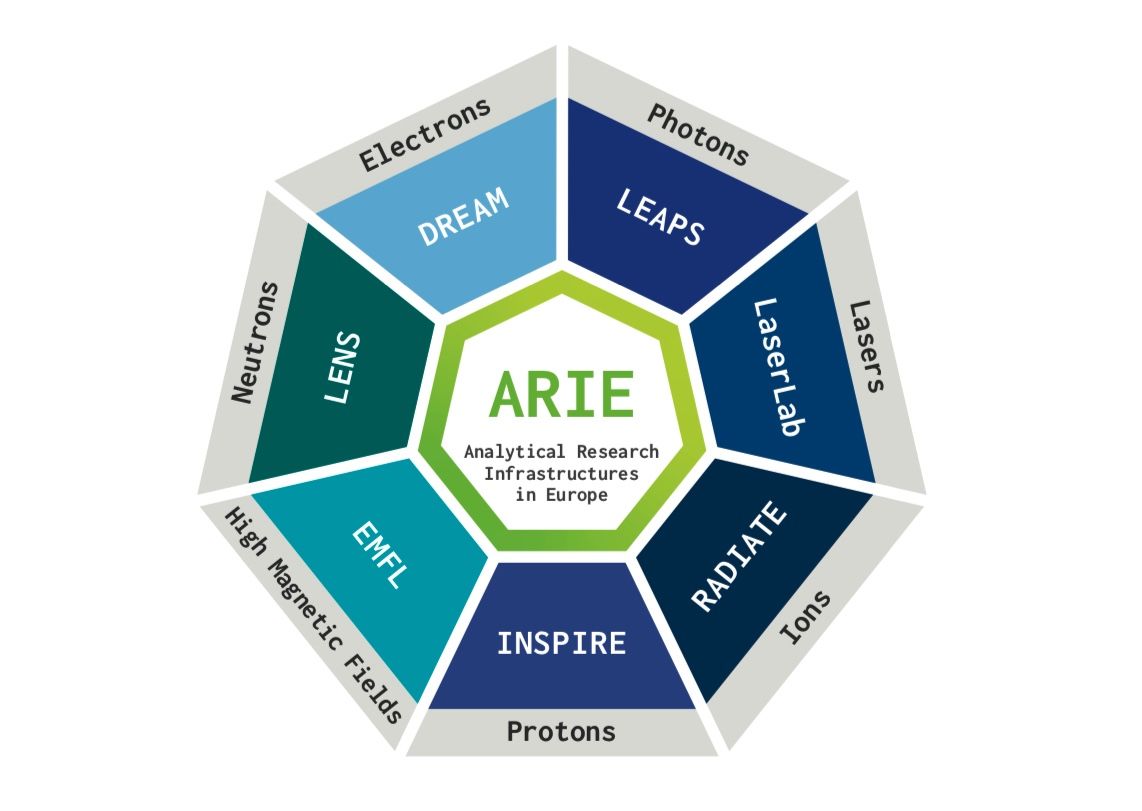
The Analytical Research Infrastructures of Europe (ARIEs) are a key resources for addressing the five Horizon Europe missions – Adaptation to climate change, Cancer, Climate-neutral & smart cities, Healthy oceans, seas, coastal & inland waters, and Soil health & food. A joint ARIE position paper now highlights a strategic approach for addressing the Horizon Europe Missions framework.
The ARIEs are centres of scientific and technological excellence, delivering services, data and know-how to a growing and diverse user community of more than 40,000 researchers in academia and industry, across a range of domains: the physical sciences, energy, engineering, the environment and the earth sciences, as well as medicine, health, food and cultural heritage. They include powerful photon sources, such as synchrotrons, laser systems and free-electron lasers; sources of neutrons, ions and other particle beams; and facilities dedicated to advanced electron-microscopy and high magnetic fields.
According to ESS Director General, John Womersley, "This position paper shows how research infrastructures like ESS and our partners in areas including neutron scattering, light sources, lasers, ion beam facilities and high magnetic fields, can all contribute in critical ways to addressing the big research challenges of the coming decade and particularly to the missions of Horizon Europe. It also shows how Europe’s research facilities increasingly understand the need to work together to coordinate their activities and present common solutions."
“Insights into materials and living matter made possible by their collective tools underpin the advanced research necessary for the success of the Horizon Europe Missions," underlines Chair of LENS and Director of the Institut Laue-Langevin in France, Helmut Schober. "The ARIEs provide free access to the scientific user community based upon scientific excellence and open data. Access to the ARIEs is equally being made simpler and smarter, more democratised and less reliant on travel. As part of this effort, we are also looking into the possibility of providing ‘challenge driven’ access in order to speed up the scientific output for societal relevant themes," he adds.
To address the Missions, the transversal platforms of ARIEs will collaborate amongst themselves and with the Mission specialists at unprecedented levels. They will build and exploit open networks to share knowledge and skills, to coordinate access, to prepare samples, and to create the sample environments required for experiments under real conditions; in doing so, they will use the new European Open Science Cloud.
Coordinator of the ARIE working group, Mirjam van Daalen, vice Chair of the LEAPS coordination board and Chief of Staff of the Photon Science Division at Paul Scherrer Institute (PSI) in Switzerland said, “Within the Horizon Europe Missions, there is an unprecedented opportunity to deploy the analytical techniques, skills and know-how of the ARIEs on a large scale, targeting the Missions’ individual research needs. Thanks to the nature of Europe and the ease of multi-disciplinary, cross-border partnerships, the many varied and complementary analytical techniques of the ARIEs can be brought together in coordination with the Horizon Europe Mission specialists. As a result, the unique value of the ARIEs can be added to the Missions, accelerating research and driving solutions for Europe’s citizens.”
“The Analytical Research Infrastructures of Europe (ARIEs) provide unique windows into the workings of the world around us,” adds Caterina Biscari, Chair of LEAPS and Director of the ALBA Synchrotron in Spain. “The cross-border cooperation within Europe allows for harnessing the power of its analytical research infrastructures collectively, to fuel the cutting-edge R&D required by the five Horizon Europe Missions. Nowhere else in the world is this readily possible.”
























